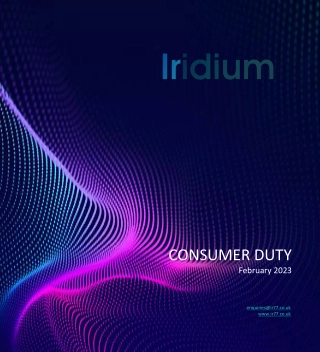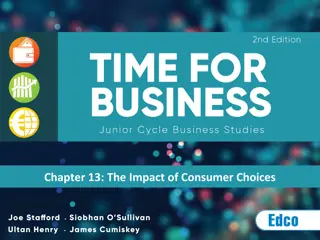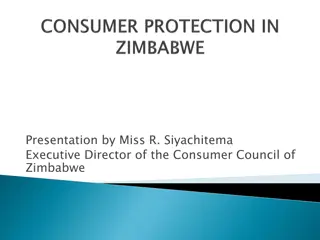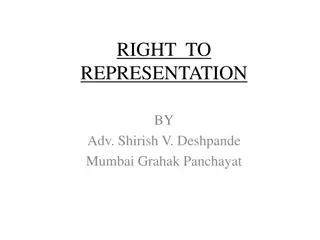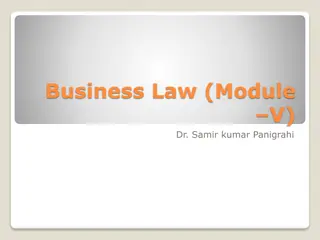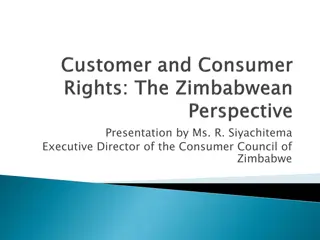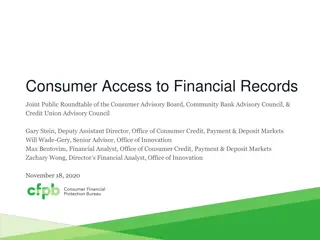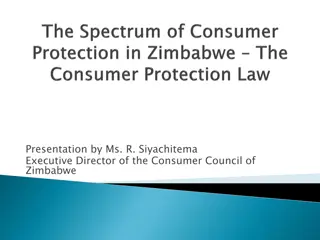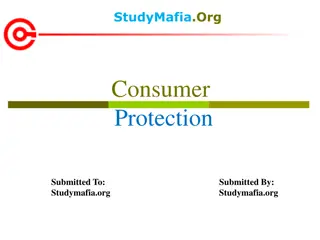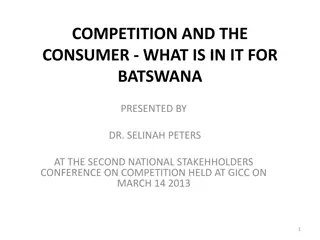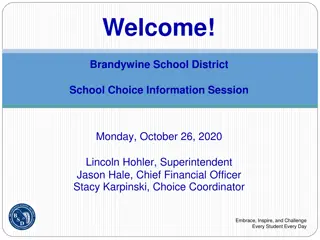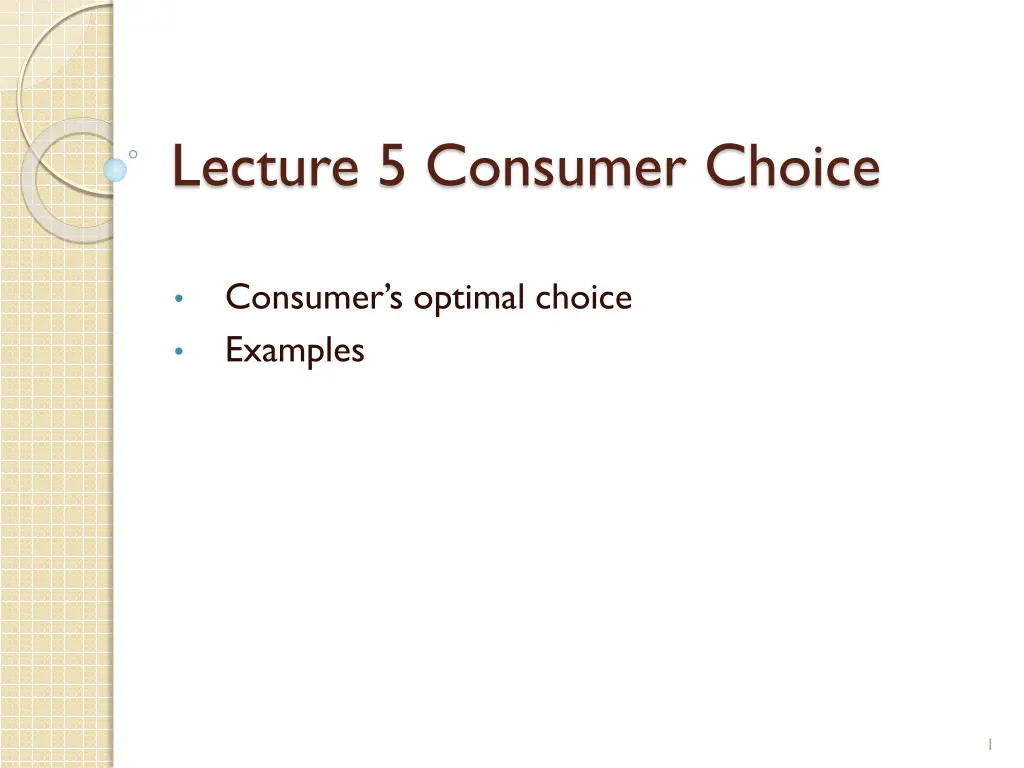
Consumer Choice and Optimal Selection Examples
Explore the principles of consumer choice, optimal selection, the Lagrangian method, and the equal marginal principle through graphical presentations and mathematical derivations. Understand how indifference curves and budget constraints determine the best affordable bundle for consumers.
Download Presentation

Please find below an Image/Link to download the presentation.
The content on the website is provided AS IS for your information and personal use only. It may not be sold, licensed, or shared on other websites without obtaining consent from the author. If you encounter any issues during the download, it is possible that the publisher has removed the file from their server.
You are allowed to download the files provided on this website for personal or commercial use, subject to the condition that they are used lawfully. All files are the property of their respective owners.
The content on the website is provided AS IS for your information and personal use only. It may not be sold, licensed, or shared on other websites without obtaining consent from the author.
E N D
Presentation Transcript
Lecture 5 Consumer Choice Consumer s optimal choice Examples 1
Consumers optimal choice Inner solution Equal marginal principle The Lagrangian Method Corner solution (Week 3 basic concepts recording # 3 & recording #4) 2
So far Indifference curves describe consumer preference Budget constraint describes what the consumer can afford Put the two together to determine the best bundle the consumer can afford 3
Graphical presentation for an inner solution Y At point A, MRS > Px/Py I/Py A C At point C, MRS = Px/Py Budget line slope = - Px / Py B At point B, MRS < Px/Py I/Px X Px/Py = the rate at which Y is traded for X in the marketplace MRS = the rate at which the consumer is willing to trade Y for X 4
At the best choice: Must spend every penny (assume no savings, goods are divisible) Equal Marginal Principle MRS = the rate at which the consumer is willing to trade Y for one extra unit of X Px / Py = the rate at which Y is traded for X in the marketplace MRS = MUx / MUy = Px / Py MUx /Px = MUy /Py 5
The Lagrangian Method Max U(X, Y) by choosing X and Y Subject to I = Px * X + Py * Y Define Lagrangian function L = U(X,Y) + (I Px * X Py * Y) is an additional variable, now need to choose X, Y, 6
We get the equal marginal principle back! is the shadow price of the budget constraint Tell us how much the objective function will increase if the budget constraint is relaxed by one dollar ((dL/dI = dU/dI when I is binding) Therefore, is also called the marginal utility of income when utility is maximized 8
Exercise: find the best choice when U (Food, Clothes) = ln (F) + ln (C) Price of food = $2 Price of clothes =$1 Income=100 1 ? 1 ? ??? ???=?? =? ?=2 ?? 1 ? = 2? 2? + ? = 100 2? + 2? = 100 ? = 25 ? = 2? = 50. 9
More generally about Cobb-Douglas Utility Maximize ? ?,? = ???? Alternative expression: ? ?,? = ??? ? + ???(?) Subject to budget constraint: Two equations solve for two unknowns (X and Y) ?? ? + ?? ? = ? Equal marginal principle: ??? ??? =?? ?? 10
Solving it ??? ??? =?? ?? ??=?? ??? 1 ?? ?? ??? 1=?? ? =? ?? ?? ? ? ?? Plug in budget constraint: ?? ? + ?? ? = ? ?? ? + ?? ? ?? ? = ? ? ?? (??+? ? ???)= ???) ? = ? ? ?+? ? ? ? ??, Y = ?? ? = ?+? (??+? 11
Demand only depends on own price, not price of other goods Homothetic preferences: MRS only depends on the ratio of X and Y Fixed share of income for each good These properties are specific to Cobb-Douglas utility! 12
What if the equal marginal principle cannot be satisfied? corner solution In this example, we have ??? =??? ??? ??? ?? Spend every penny on good Y Y <?? U ?? ??? ?? < I/Py More generally, if equal marginal principle cannot hold: Spend every penny: I=Px * X + Py * Y I/Px X Check which corner gives higher utility 13
Example 1 of corner solution: perfect substitutes U=X+2Y Px=10 Py=10 Income=1000 Y U 100 100 X Corner solution: X=0, Y=100 14
Example 2 of corner solution: perfect substitutes U=2X+Y Px=10 Py=10 Income=1000 Y U 100 100 X Corner solution: X=100, Y=0 15
Example 3 of corner solution: perfect complements U=min(X,3Y) Px=10 Py=10 Income=1000 U Y 100 Locus curve: X=3Y Budget line:10X+10Y=1000 Solving the two equations 100 X Corner solution: X=75; Y=25 16
Recap Use indifference curves and budget constraint to describe optimal consumer choice Equal marginal principle for inner solution Special case: Cobb-Douglas utility Corner solutions Special cases: perfect substitutes, perfect complements 17
To do list before next lecture Homework #3 on Achieve, due Sept. 17 midnight Quiz #3 on Achieve, due Sept 20 midnight Read textbook Chapters 5.1, 5.2, 5.3, 5.4 18


